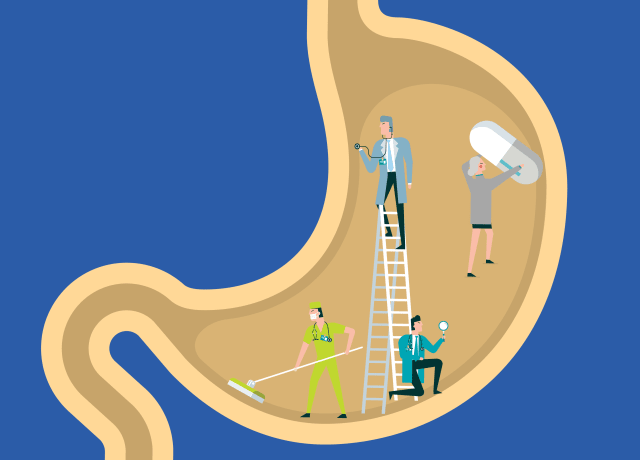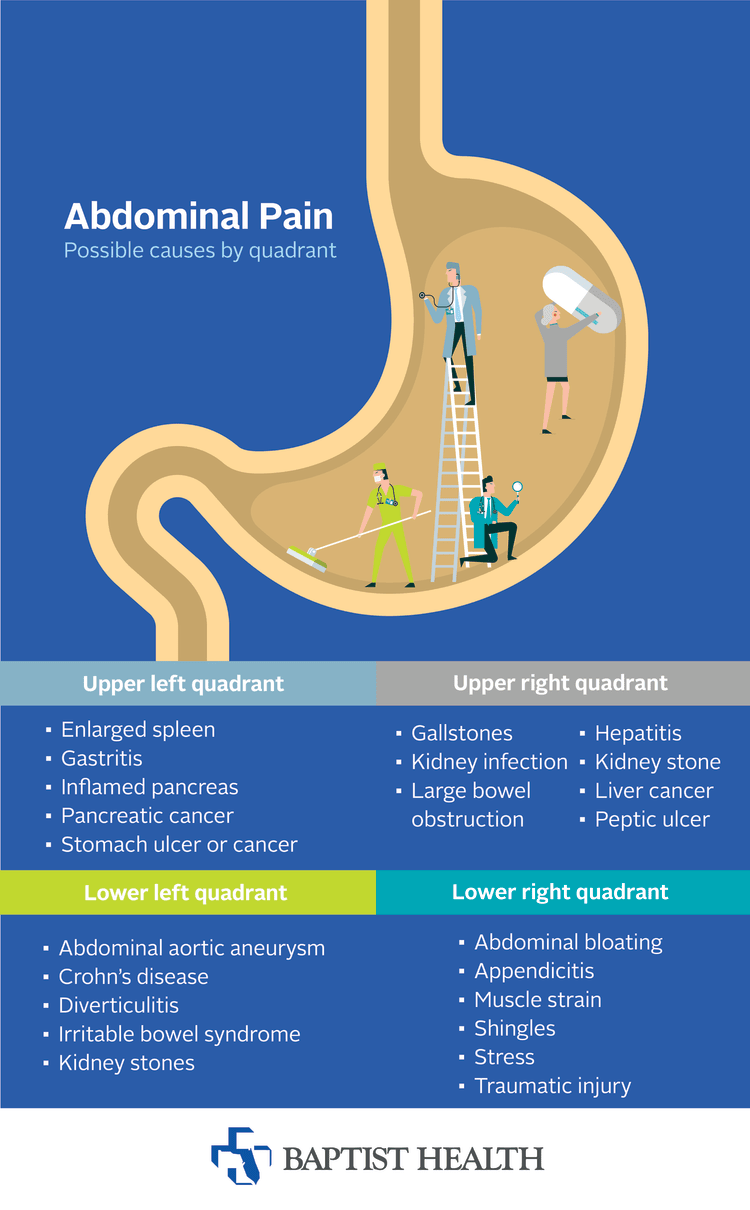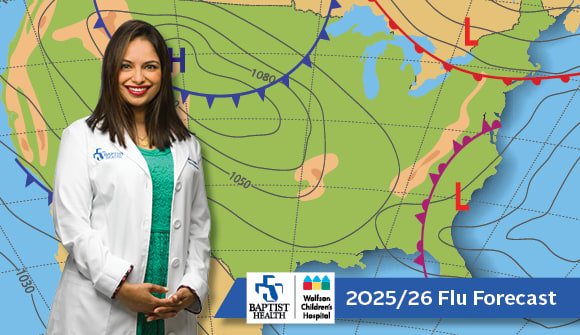Belly blues
Potential causes of stomach pain.
Article Author: Johnny Woodhouse
Article Date:

Whether the cause is gas, indigestion, menstrual cramps or food poisoning, we all experience some form of abdominal pain in our lives. Call it the belly blues. But stomach pain that doesn’t go away or keeps coming back can be cause for concern.
Kristina Santiago-Naranjo, MD, an internist with Baptist Primary Care, said narrowing down the pain to one of four quadrants of the abdomen may indicate which organs are involved and whether it's temporary or serious.
“Different pain syndromes typically have characteristic locations,” she said.
Getting acquainted with the quadrants
To understand how digestive organs function and are susceptible to a variety of medical issues, Dr. Santiago-Naranjo recommended getting familiar with the four sections of the abdomen:
- Upper right
- Upper left
- Lower right
- Lower left

Pain in the upper right quadrant may indicate a problem with the liver, gallbladder, bile ducts or pancreas. Diseases related to the upper right quadrant include:
- Hepatitis
- Gallstones
- Liver cancer
- Kidney infection
- Kidney stone
- Peptic ulcer
- Large bowel obstruction
Pain in the upper left quadrant, home to the stomach, pancreas, spleen and left kidney could indicate:
- Inflamed pancreas
- Pancreatic cancer
- Spleen disorders or enlarged spleen
- Gastritis
- Stomach cancer or ulcer
General causes of specific stomach pain in the lower right quadrant may be related to the appendix, such as inflammation (appendicitis). If left untreated, the appendix can rupture or cause infection, leading to serious or even fatal consequences.
Other general causes include:
- Stress
- Abdominal bloating
- Traumatic injury
- Muscle strain
- Shingles
Pain in the lower left quadrant, where most of the small and large intestines are located, could be related to gastrointestinal diseases like:
- Irritable bowel syndrome
- Crohn’s disease
- Diverticulitis
- Abdominal aortic aneurysm
- Kidney stones
Where does it hurt?
Some stomach pain may be confused for chest pain, especially in the upper left abdominal region which is close to the heart and left lung. Pelvic pain may also be confused for lower stomach pain and may indicate something like a urinary tract infection.
When evaluating a patient for stomach pain, a physician is looking to determine five things:
- Is the pain acute or chronic?
- Is it localized?
- What does the pain feel like (dull, sharp, cramping)?
- Are there any precipitating factors (certain foods)?
- What are the associated symptoms (diarrhea, constipation, bloating, fever, chills, nausea)?
According to Dr. Santiago-Naranjo, the vast majority of patients with chronic abdominal pain have an underlying disorder, most commonly irritable bowel syndrome (IBS), a condition that causes changes in digestion but doesn’t damage the GI tract.
Surgery is often the first-line treatment for many gastrointestinal conditions, but milder conditions like IBS, constipation, food poisoning, lactose intolerance or a stomach virus can be managed with over-the-counter or prescription medications.
Sudden or severe stomach pain needs immediate medical attention, especially if accompanied by vomiting, bloody stools, abdominal swelling or the inability to hold down food or fluids.
“It’s possible to have stomach pain that doesn’t stem from classic gastrointestinal symptoms,” Dr. Santiago-Naranjo said. “Most abdominal pain has a benign or self-limiting cause. Imaging tests and laboratory results will help narrow it down.”
Have questions about pain you are experiencing? Baptist Primary Care physicians are ready to answer them and guide you through next steps. Call 904.202.4YOU or click here to find the right physician for you.




